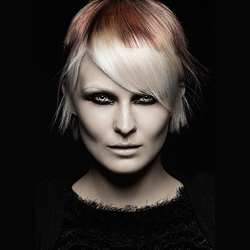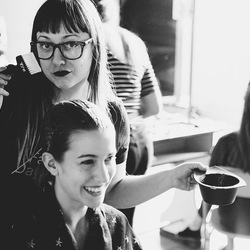The saying, “You get what you pay for,” is often touted in the beauty industry, but is a haircut really worth its high price tag? Contrary to popular belief, haircuts aren’t solely expensive because a stylist believes that she or he is “worth it”—there is actually an array of factors that determine the price of a haircut. Check out the top five reasons why even a standard haircut isn’t cheap.
1) Education
If any non-pro simply picked up a pair of scissors and starting cutting, you can bet money that the results would be anything but professional. Hence the reason why every state in the U.S. requires pros to obtain a cosmetology license to work on clients. And cosmetology school isn’t cheap—the average tuition in California ranges from $5,000 to $25,000. Add in the cost of textbooks, supplies and subsequent continuing education, which should be done every couple of years at a minimum, and you have an extremely costly upfront investment. The only way to reap the rewards of that investment and pay for classes in the future? Factor in the cost of education to the price of every cut.
2) Tools
When it comes to cutting hair, a stylist is only as good as their tools, meaning that a cheap pair of drugstore scissors just isn’t going to cut it (pun intended!). Stylists must invest in top-tier tools that get the job done. Think of how hard it is to cut a clean, straight line with dull scissors. Now, imagine if a stylist used them to cut your strands? Not pretty! Typically, a good pair of shears cost upward of $100, with industry standards coming in around $300 on the low end and $1,000 and up, on the high end every 2-5 years. Professional styling tools such as blowdryers or curling irons can range from $100-$400 each. Other tools stylists must purchase consistently include combs, brushes, razors, clippers, and the products they use on your style. Trust us, it adds up quick!
3) Salon Rent & Utilities
Some stylists rent their salon space as independent contractors, meaning they must pay rent and occasionally utilities every month (a total ranging anywhere from $200 to $2000) to operate their business. Traditional salon owners must also factor in rent, utilities and operating costs when determining prices. These numbers include everything from water and electricity to the cost of the POS system (the platform used to process payments) to scheduling systems, etc.
4) Insurance
Let’s face it: Accidents happen in the salon. Salon owners and booth renters must purchase insurance, which can range from $250 to $3,000 or more, depending on the type of coverage. Not to mention, stylists need to pay for their own health insurance and they don't get sick days or PTO - so days they don't work, they don't make money.
5) Expertise
In addition to the required costs of working as a stylist, there is a level of expertise that comes into consideration when determining the price. An experienced stylist with a myriad of loyal, satisfied clients can and should charge more than someone who just started - you learn something new each day in the salon and after every client. Your time dedicated to your craft should be factored into your expertise. Once stylists have established demand for their business, they should set a price that reflects their value—within reason, of course.
The bottom line? Think about your haircut in the same way you would think about purchasing a diamond ring: You wouldn’t want a $10 cheaply made, cubic zirconia ring when you could have a real diamond sparkler, would you? Sure, there are certain factors (clarity, sourcing costs, cut, etc.) that make the diamond more expensive, but if you’re going to invest in a diamond, you may as well do it right. The same rule applies for your strands. Your stylist has invested greatly in their career so be sure to invest in a good, trustworthy stylist and we promise, the results will absolutely pay off!















